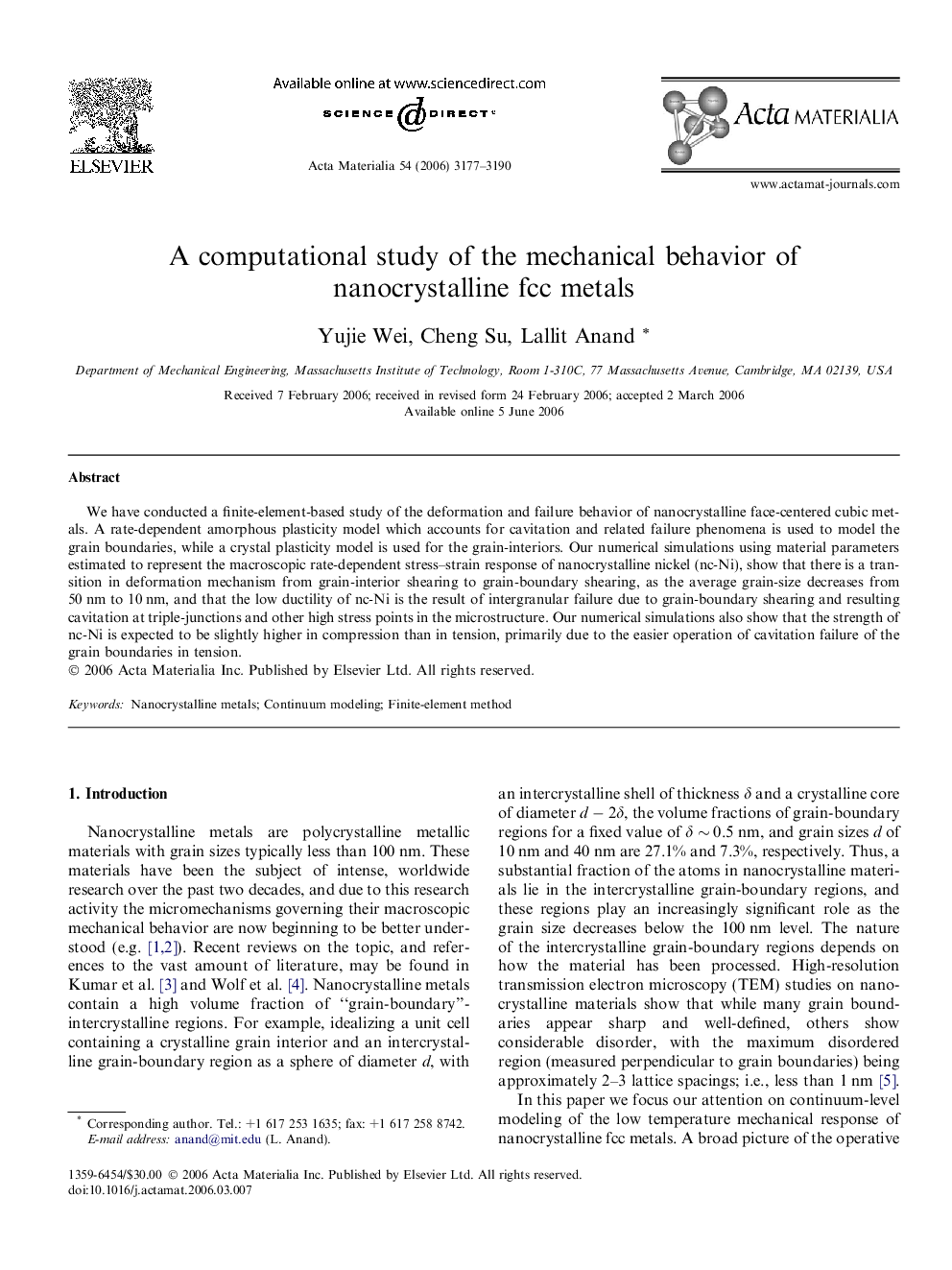| Article ID | Journal | Published Year | Pages | File Type |
|---|---|---|---|---|
| 1450407 | Acta Materialia | 2006 | 14 Pages |
We have conducted a finite-element-based study of the deformation and failure behavior of nanocrystalline face-centered cubic metals. A rate-dependent amorphous plasticity model which accounts for cavitation and related failure phenomena is used to model the grain boundaries, while a crystal plasticity model is used for the grain-interiors. Our numerical simulations using material parameters estimated to represent the macroscopic rate-dependent stress–strain response of nanocrystalline nickel (nc-Ni), show that there is a transition in deformation mechanism from grain-interior shearing to grain-boundary shearing, as the average grain-size decreases from 50 nm to 10 nm, and that the low ductility of nc-Ni is the result of intergranular failure due to grain-boundary shearing and resulting cavitation at triple-junctions and other high stress points in the microstructure. Our numerical simulations also show that the strength of nc-Ni is expected to be slightly higher in compression than in tension, primarily due to the easier operation of cavitation failure of the grain boundaries in tension.
